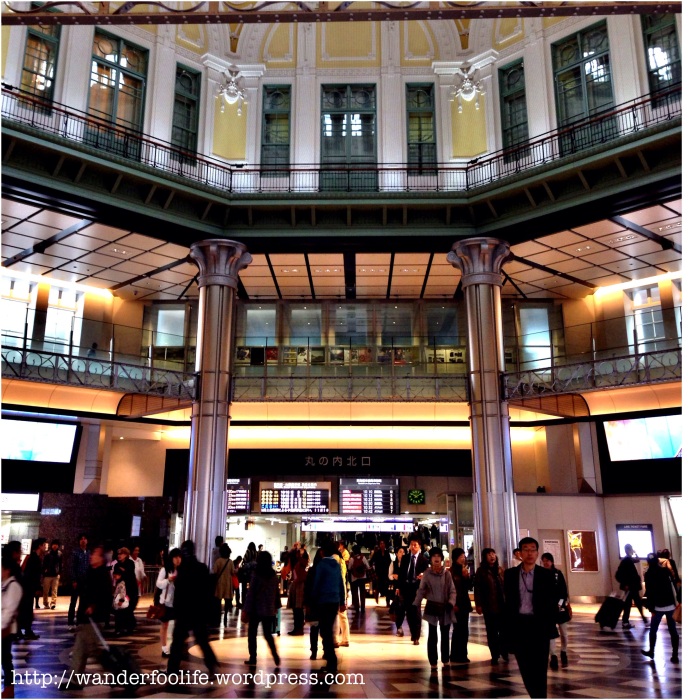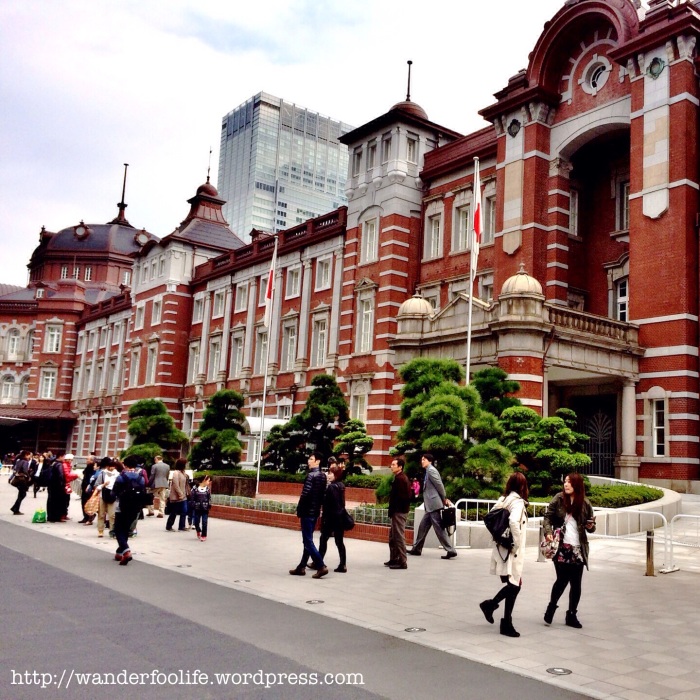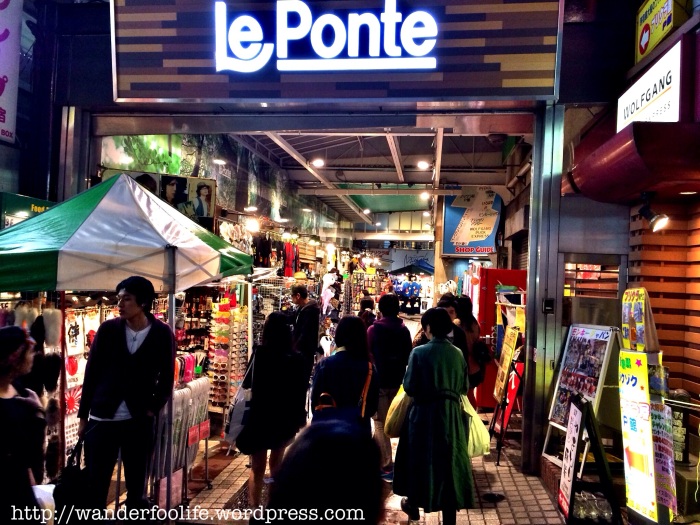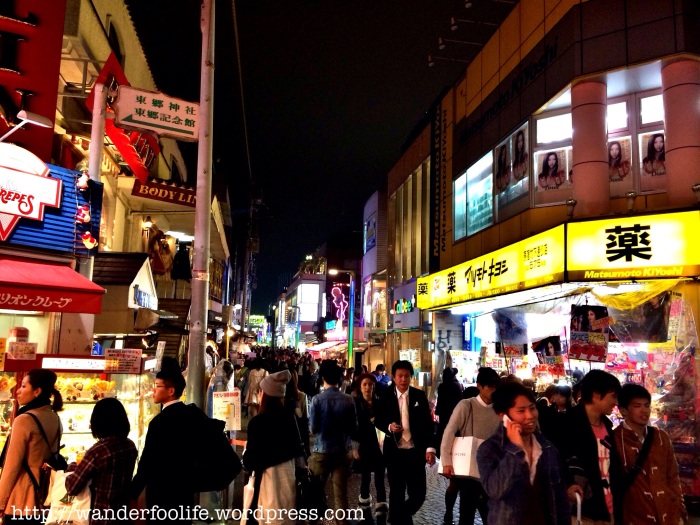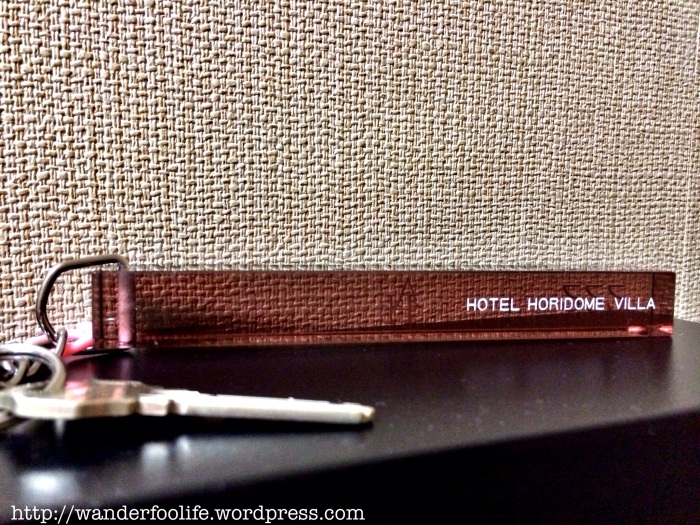Day 4, Saturday (02/11/2013) Morning: Tokyo Station – Marunouchi Area
Location: Marunouchi
Point of Interest: Tokyo Station, Marunouchi Area, Imperial Palace
Kodemmacho Station to Ginza Station (via Tokyo Metro Hibiya Line) 9:39 – 9:50
Ginza Station to Tokyo Station (via Tokyo Metro Marunoichi Line) 9:56 – 9:59
The whole journey costs 160Y though we transferred to another line, I think they are being operated by the same company.
We initially plan to join this free Tokyo Walking Tour which is being held every Saturday starting at 1:00pm. The tour was suppose to start from Tokyo Station then walk around Marunouchi towards the Imperial Palace East Garden. But since we have quite a lot of places to check later in the afternoon so we decided to have our own tour and start in the morning. We collected some additional maps about Marunouchi from our hotel and left.

Outside the station across the street, there are a group of Uncles and Aunties sketching the facade of Tokyo Station
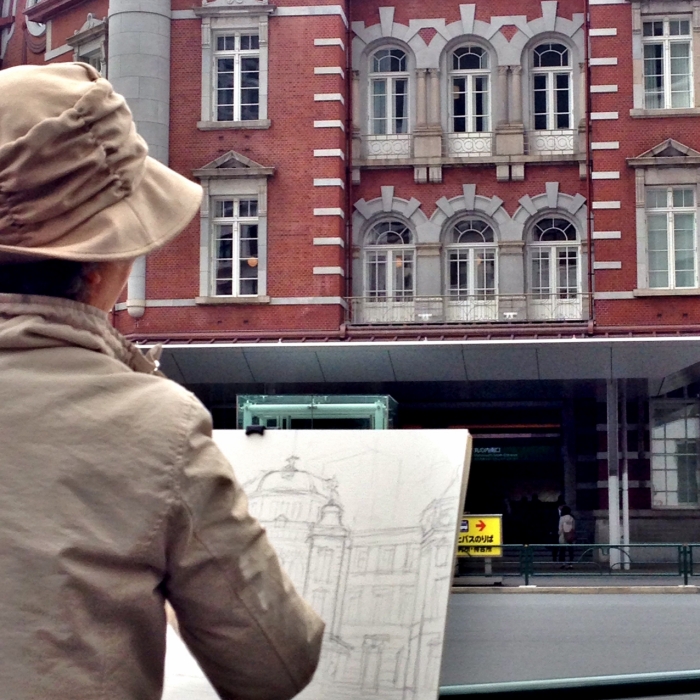
One of the Aunties with her sketch, Subarashi ne!
Marunouchi, the area between the Outer Gardens of the Imperial Palace and Tokyo Station, is where the very first office building in Western style architecture, the Mitsubishi Ichigokan, was built. It was followed by brick buildings built one after another resembling Lombard Street in London and thus was called Itcho London. Later, with Tokyo Station, the Marunouchi Building and others built in the area, the modern office district in Japan was born. Since that time, many other huge commercial districts have been built but, recently, redevelopment on a major scale has taken place in the Marunouchi, and many attractive commercial buildings and restaurants have been built. It draws attention as an attractive place for adults to work and play- http://www.gotokyo.org
We read from our guidebook that there is a free shuttle bus that roam around this area so we decided to ride one of them so we can check the area more faster. We were quite intrigue with one of the street where lots of old books are being sold on the side street so we decided to alight and check them out. Until now I still don’t know the name of that street.

This is just a part of this very looooong street that sells so many books.

Aside from the books being sold on the side street, there are actually book shops in this area.
We came back from the place were we alighted and I asked (in my broken Japanese) a tourist guide(?) on where we are exactly from the map (route of the free bus) that I have, he said it’s not in the map ‘coz we took the free bus that runs on route 2.

Me: Sumimasen, koko wa doko desu ka? (pointing in my map).
Guy: #&@%%&&%%^
Me: Oh, so not in this map?
Guy: Yes! Yes! Yes!
He advice us to just wait there because the next bus is arriving soon which can bring us back to Tokyo Station again. So we took the next free shuttle bus and continued with the rest of the route. Then we saw this walled structure surrounded by a moat, it is the Tokyo Imperial Palace East Garden so we alighted on the next bus stop.
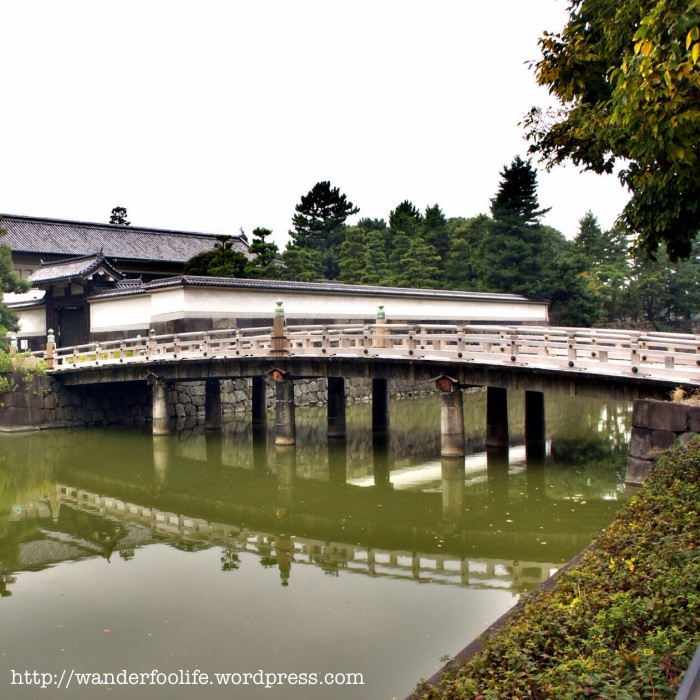
A bridge leading to one of the gates of the imperial garden

The massive wooded gates of the imperial garden

From what I read, this used to be a headquarters of palace security staff during earlier days.
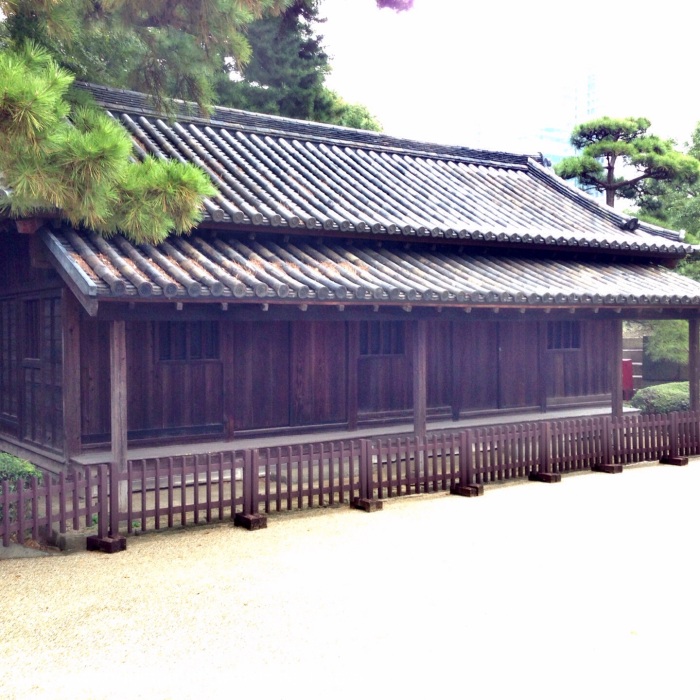
Another structure inside, I forgot to read what it is 😉
We exited the imperial palace garden and decided to just walk back to Tokyo Station instead of taking the free shuttle again.
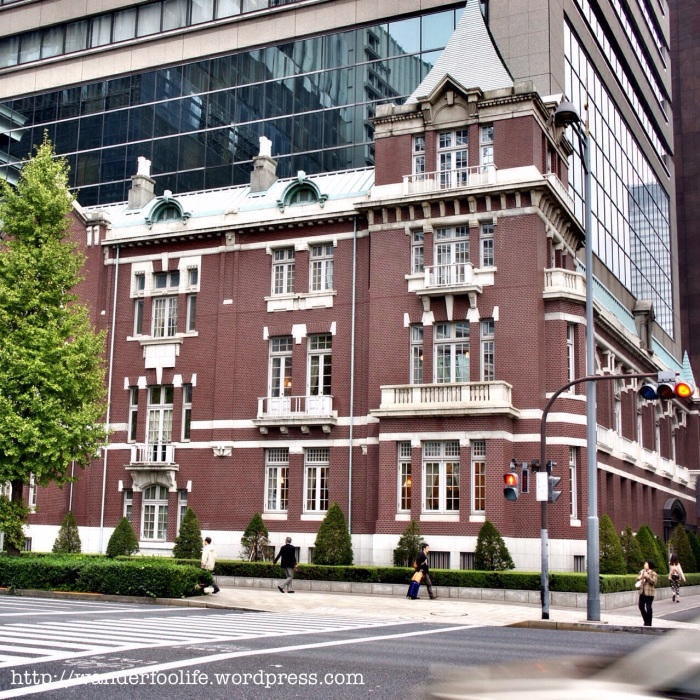
One of nice looking building that you will see right after you exit the Imperial Palace Gardens on the street leading back to Tokyo Station
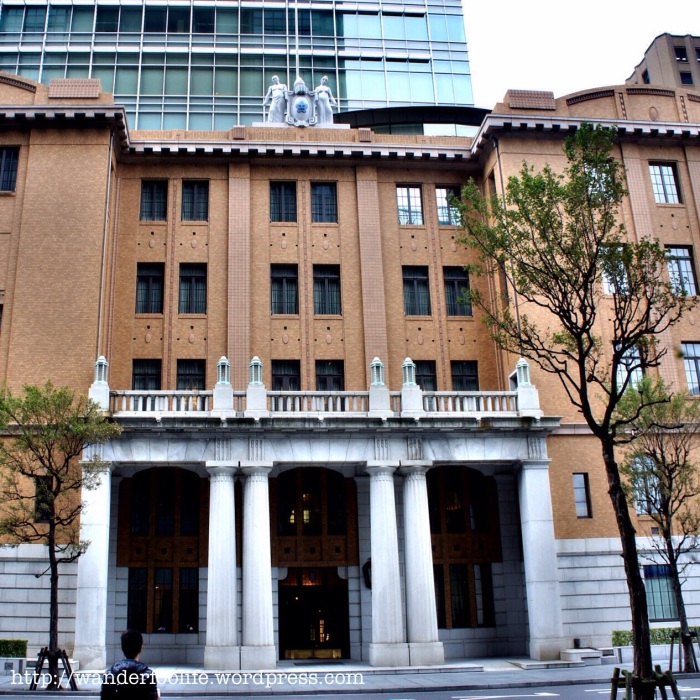
Another strange (in a very nice way) looking building as you walk towards Tokyo Station.

Marunouchi Nakadori Avenue, a shopping and cafe street that runs north to south through the business district. The street is very popular during winter with Christmas illuminations.

Mitsubishi Ichigokan Museum, the red-brick office building was originally constructed in 1894 but was rebuilt in 2010 after it was destroyed and now stands as an art museum.

And finally back to Tokyo Station to proceed to our next itinerary for the day
Day 4 (02/11/2013) Afternoon: Shinjuku – Shibuya – Harajuku
Location: Shinjuku
Point of Interest: Tokyo Metropolitan Government Building
Tokyo Station to Shinjuku Station (via JR Chuo Rapid Line) 13:25 – 13:39 (190Y)
From Tokyo Station our next stop is Shinjuku, our main goal here is to go to Tokyo Metropolitan Government Building which has an observation deck on it’s 45th floor to be able to view the entire Tokyo from above and it’s free, instead of paying if you will go Tokyo Tower or Tokyo Skytree.

Shinjuku Train Station. we took the south exit to go to Tokyo Metropolitan Government Building
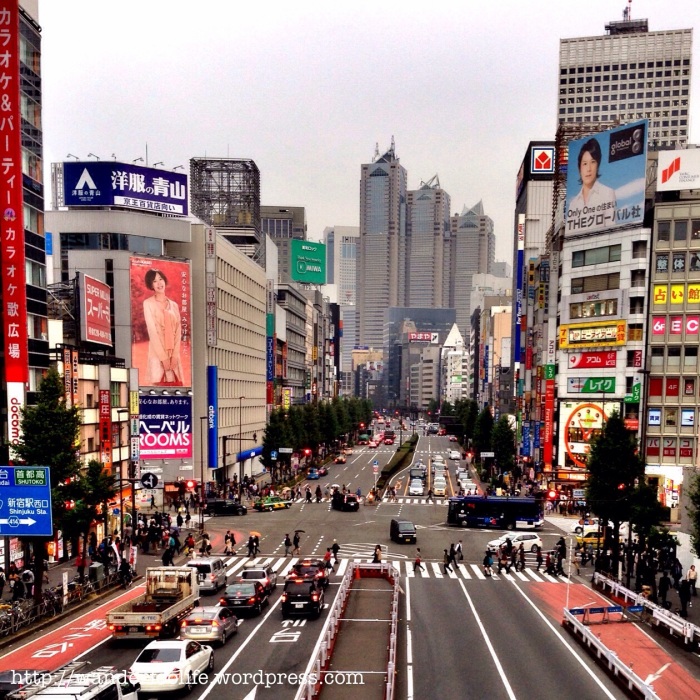
View from overhead pedestrian bridge

If you feel like you’re about to get lost, there are several maps along the streets.

Don’t be confuse, they look almost the same, the building with the viewing deck is the two tower on the right most, we almost enter the building on the left ‘coz they look the same 😉

The lift lobby going up is on the ground floor, going down you will have to alight on the second floor

Aerial view of metropolitan Tokyo.

It’s been cloudy and some rain since morning so the view was quite obstructed.

One of the newest iconic building in the area

Earlier when we arrived Shinjuku Station (left area on the map) we use the south exit to go to Tokyo Metropolitan Government Building (right area on the map), on the way back to the station we saw this map and found out that it is much easier if you will take the west exit.

The west exit as seen if you are coming from Tokyo Metropolitan Government Building
Location: Shibuya
Point of Interest: Statue of Hachiko, Shibuya Crossing, shopping at Center Gai
Shinjuku Station to Shibuya Station (via JR Yamanote Line) 16:14 – 16:21 (150Y)
We initially plan to walk from Shinjuku to Harajuku to Shibuya but because of the weather, we decided to skip the plan (and Harajuku) and just take the train to Shibuya.

The super crowded Shibuya Station

Take the “Hachiko Exit” if you want to see the Statue of Hachiko
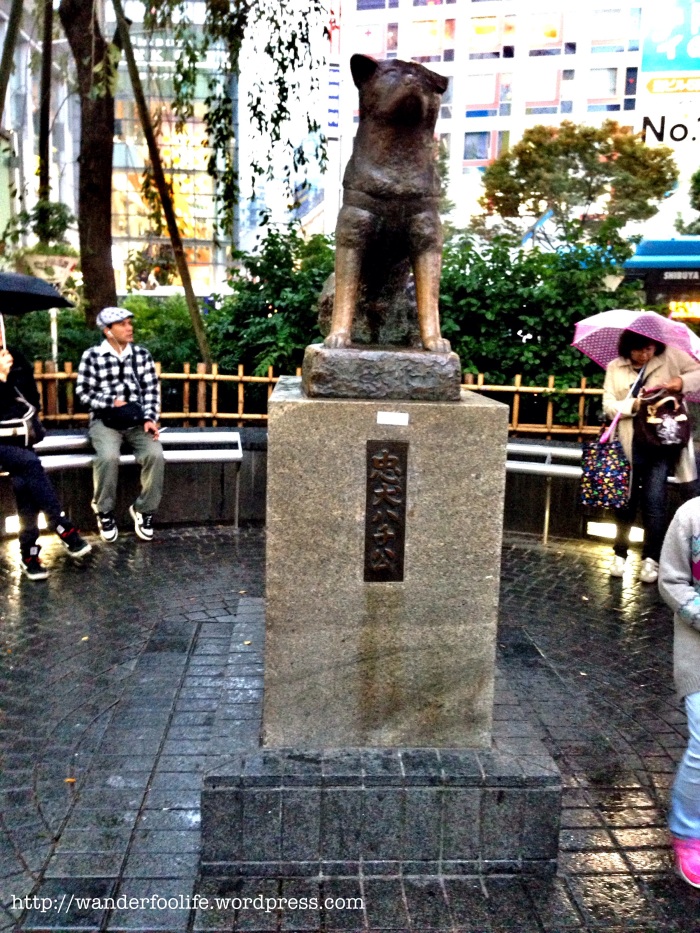
In 1924, Hidesaburō Ueno, a professor in the agriculture department at the University of Tokyo, took in Hachikō, a golden brown Akita, as a pet. During his owner’s life, Hachikō greeted him at the end of each day at the nearby Shibuya Station. The pair continued their daily routine until May 1925, when Professor Ueno did not return. The professor had suffered from a cerebral hemorrhage and died, never returning to the train station where Hachikō was waiting. Each day for the next nine years Hachikō awaited Ueno’s return, appearing precisely when the train was due at the station.- Wikipedia

Shibuya is famous for its scramble crossing. It is located in front of the Shibuya Station Hachikō exit and stops vehicles in all directions to allow pedestrians to inundate the entire intersection. The statue of Hachikō, a dog, between the station and the intersection, is a common meeting place and almost always crowded.

Shibuya Crossing is often featured in movies and television shows which take place in Tokyo, such as Lost in Translation,[4] The Fast and the Furious: Tokyo Drift, and Resident Evil: Afterlife and Retribution, as well as on domestic and international news broadcasts.

The birthplace of many Japanese fashion trends, Center Gai is a busy pedestrian zone in the heart of Shibuya lined by stores, boutiques and game centers. In the evenings the street is crowded with young people heading to night clubs, restaurants and bars, or just loitering around.
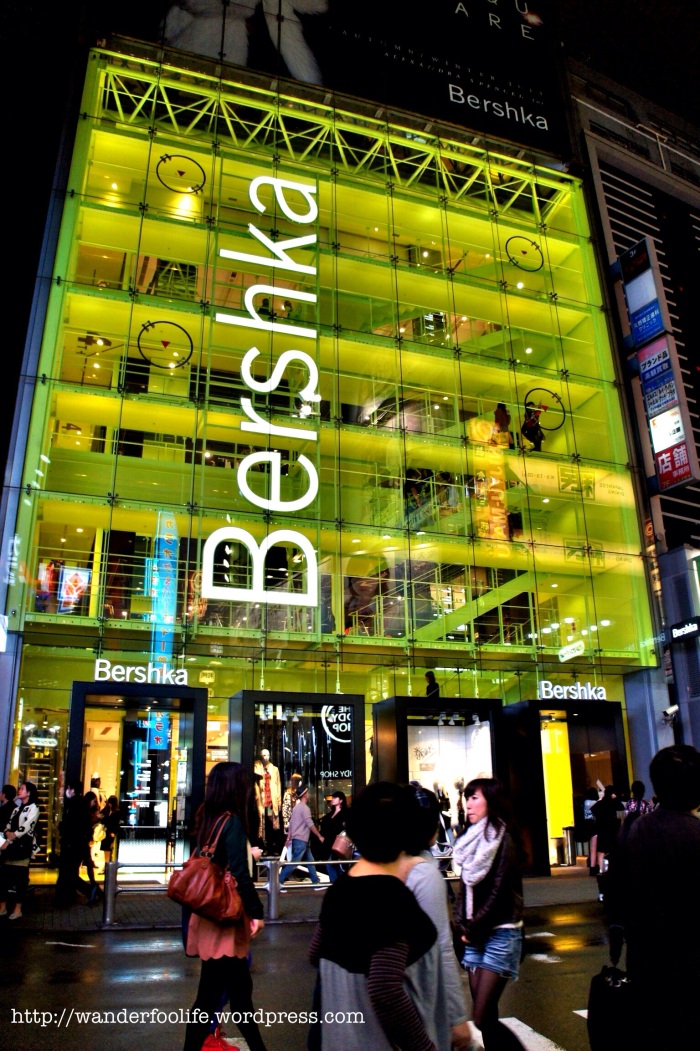
Center Gai (センター街 Sentā-gai) is a narrow street in Shibuya, Tokyo, Japan. Center Gai is well known for its clothing stores, music stores, and video game arcades. This road starts from Starbucks Coffee and ends at the HMV advertisement above gein kawano. This Road has Tutuanna, Silver Shop (under renovation), some shops, a cafe, sapporo ramen, Tsutaya. The road is approximately 120 ft. long. It can be reached from Shibuya Station.

Ramen for dinner, for a price of 780Y the taste is so-so
Location: Harajuku
Point of Interest: Shopping at Takeshita Dori
Shibuya Station to Harajuku Station (via JR Yamanote Line) 18:27 – 18:30 (130Y)
With still extra time to spare, we decided to check Harajuku, one station away on the way back to the direction of Shinjuku.

Harajuku Station, less crowded compare to Shibuya and Shinjuku

The symbol of Harajuku and birthplace of many of Japan’s fashion trends, Takeshita Dori (Takeshita Street) is a narrow, roughly 400 meter long street lined by shops, boutiques, cafes and fast food outlets targeting Tokyo’s teenagers. Because of the street’s popularity, it becomes extremely busy and crowded on the weekends. Interesting shops and restaurants can also be found along some of the side streets. – japan-guide.com
After checking a few more shops, we decided to call it a day and go back to our hotel.
Harajuku Station to Ebisu Station (via JR Yamanote Line) 20:00 – 20:09 (130Y)
Ebisu Station to Kodemmacho Station (via Tokyo Metro Hibiya Line) 20:13 – 20:39 (190Y)
